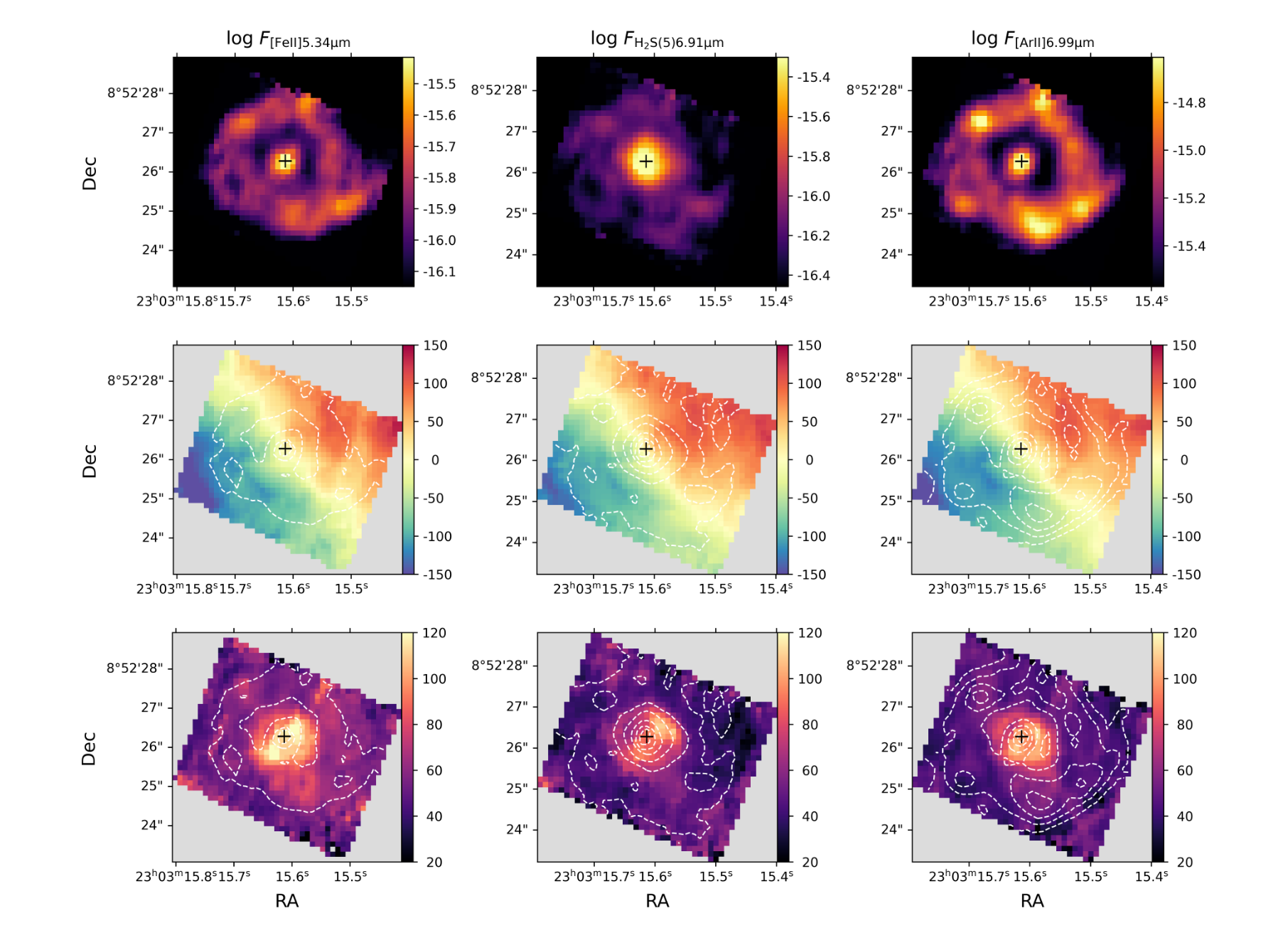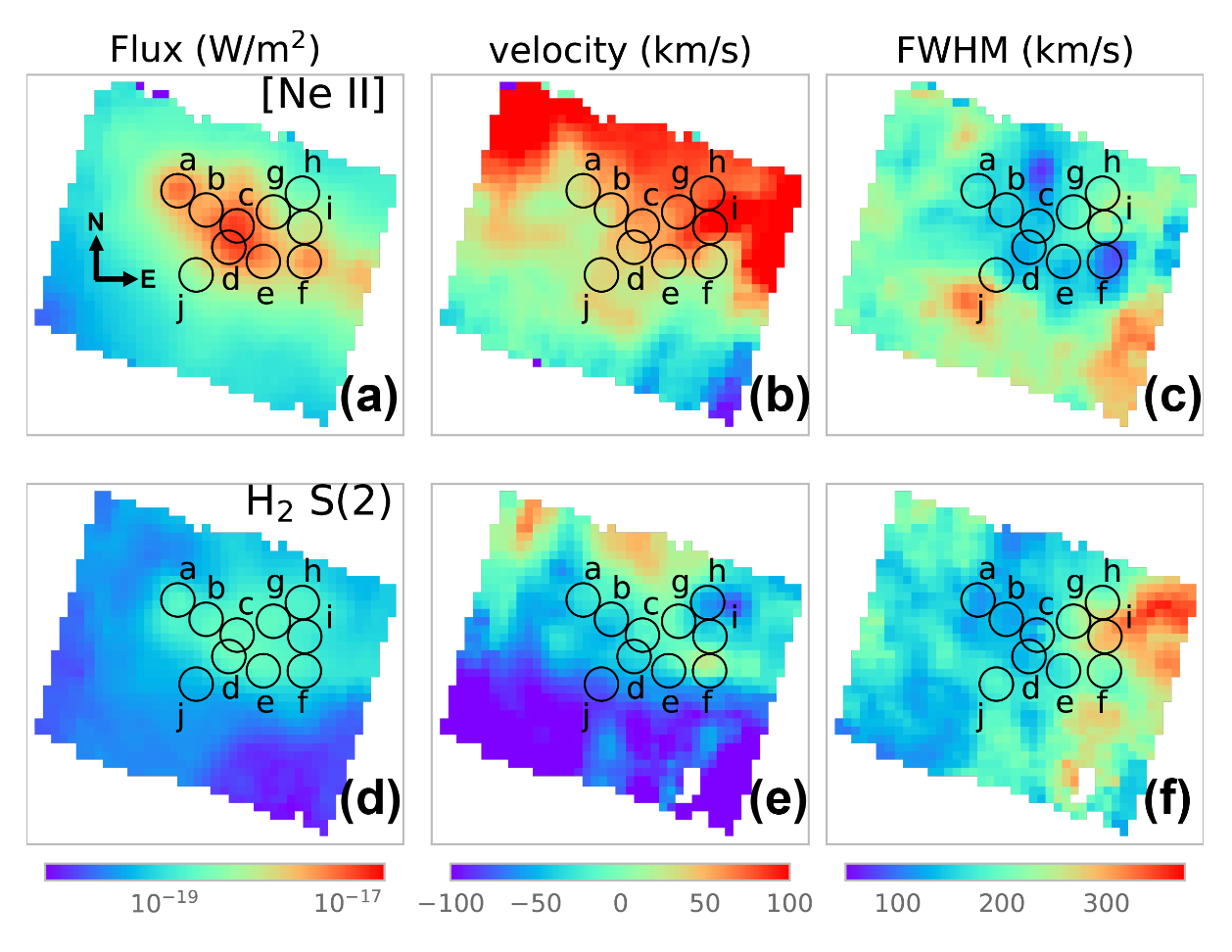Mission Overview
The Great Observatories All-sky LIRG Survey - JWST ("GOALS")
Primary Investigator: Lee Armus, Aaron Evans
HLSP Authors: Justin H. Howell, Vivian U, and Jeff Rich
Released: 2023-10-17
Updated: 2023-10-17
Primary Reference(s): Vivian U, et al. 2022, Jeff Rich, et al. 2023
DOI: 10.17909/vhw3-g317
Citations: See ADS Metrics
Source Data:
- MAST portal: NGC 7469 (10.17909/0fe2-cf33 ), VV 114 (10.17909/yqk1-jr92)
- JWST ERS DDT-1328
Slideshow
Overview
The Great Observatories All-sky LIRG Survey (GOALS) combines imaging and spectroscopic data from NASA's Spitzer, Hubble, Chandra, and GALEX space-borne observatories in a comprehensive study of over 200 of the most luminous infrared-selected galaxies in the local Universe. The sample consists of nearly 180 Luminous Infrared Galaxies (LIRGs) with luminosities above 1011 L☉ as well as 22 Ultra-Luminous Infrared Galaxies (ULIRGs) with luminosities above 1012 L☉. The objects are a complete subset of the IRAS Revised Bright Galaxy Sample (RBGS), which includes 629 galaxies with 60-micron flux densities above 5.24 Jy and Galactic latitude above five degrees. The GOALS galaxies are the nearest, z < 0.088, and brightest, far-infrared galaxies in the sky.
The LIRGs and ULIRGs targeted in GOALS span the full range of nuclear spectral types (type-1 and type-2 AGN, LINERs, and starbursts) and interaction stages (major mergers, minor mergers, and isolated galaxies). They provide an unbiased picture of the processes responsible for enhanced infrared emission in the local Universe and are excellent analogs for infrared and sub-millimeter-selected galaxies at high redshift.
The data available here have been taken as part of JWST DDT ERS program 1328 and processed by the GOALS team. More information about GOALS, including an overview of the JWST ERS observations, a listing of recent publications, and a summary of science highlights, can be found at the GOALS team website.
NGC 7469
The 12 MIRI MRS data cubes were reduced on August 4, 2022. Using the JWST pipeline development version 1.6, the GOALS team ran det1, spec2, and spec3 on both the background and the science frames as part of the standard protocol. In addition, they 1) modified the rate file with median instead of mean to better remove cosmic rays, 2) revised bad pixels selected from dedicated background data, and 3) subtracted vertical stripes in the science data. Residual fringe removal was run separately before this step was incorporated into the subsequent versions of the pipeline. See U et al. 2022 for details.
VV 114
The 12 MIRI MRS data cubes were reduced on September 23, 2022, using the JWST pipeline development version 1.7.3 and calibration reference data system (CRDS) context file jwst_0963.pmap. The team ran det1, spec2, and spec3 on the background and science frames. In between spec2 and spec3, they modified the rate files to use the median instead of the mean for better cosmic ray removal, used background data to revise bad pixels, and removed vertical stripes in science frames. Residual fringe removal was run separately before this step was incorporated into the subsequent versions of the pipeline. See Rich et al. 2023 for details.
Data Products
Data file naming convention:
hlsp_goals_jwst_miri-mrs_<target>_<ch>-<band>_<version>_<prodtype>.<ext>
where:
- <target> is the target name; "ngc7469" or "vv114" or "all".
- <ch> is the combination of the channel name, one of "ch1", "ch2", "ch3", and "ch4".
- <band> is the band name one of "short, "medium", or "long".
- <version> is the version number, "v1".
- <prodtype> is the product type, "s3d" or "readme".
- <ext> is the extension of the file, "fits" or "txt".
- For the readme file, <ch>-<band> is "multi".
Data file types:
| _s3d.fits | Integral field unit (IFU) data |
| _readme.txt | Readme file |
Data Access
The IFU products are available via the direct download links below. The image observations are also available in the MAST Portal and astroquery. Set the 'Provenance Name' filter to GOALS in the Portal Advanced Search to match all observations. The observations can also be retrieved programmatically using the astroquery.mast module. The code example below retrieves all products and allows you to download them via a bash script.
from astroquery.mast import Observations
all_obs = Observations.query_criteria(provenance_name="goals")
data_products = Observations.get_product_list(all_obs)
Observations.download_products(data_products, curl_flag=True)
-
A web-based interface for cross-mission searches of data at MAST or the Virtual Observatory
-
Search for and retrieve GOALS data products programmatically.




